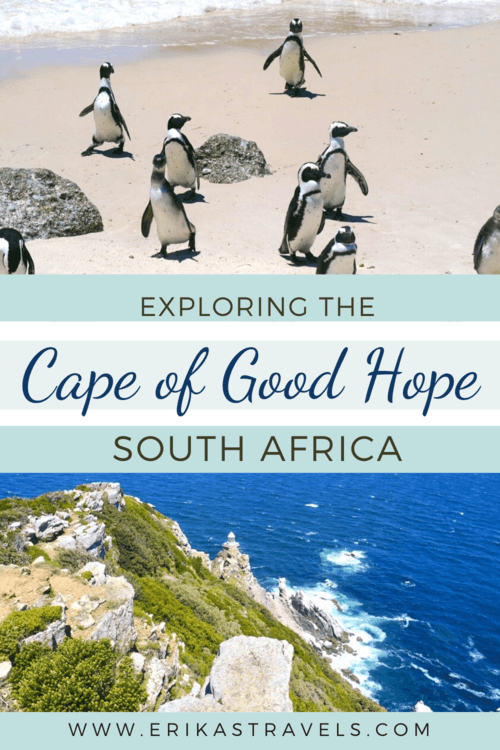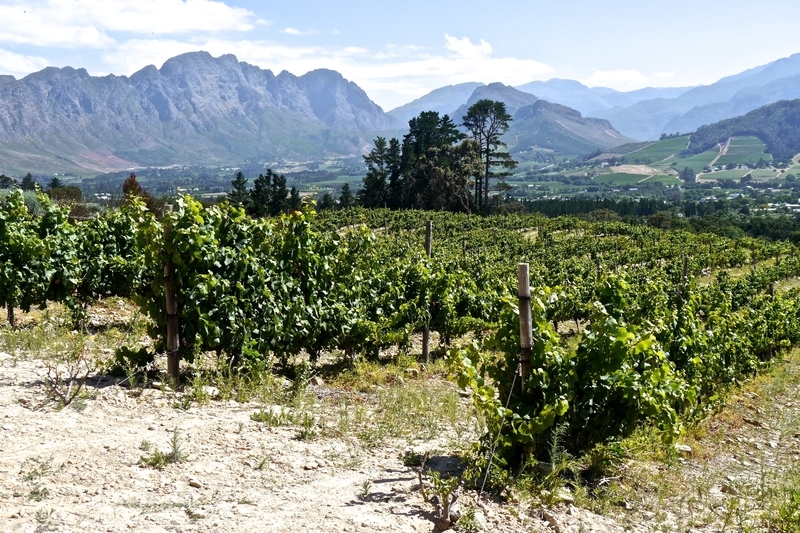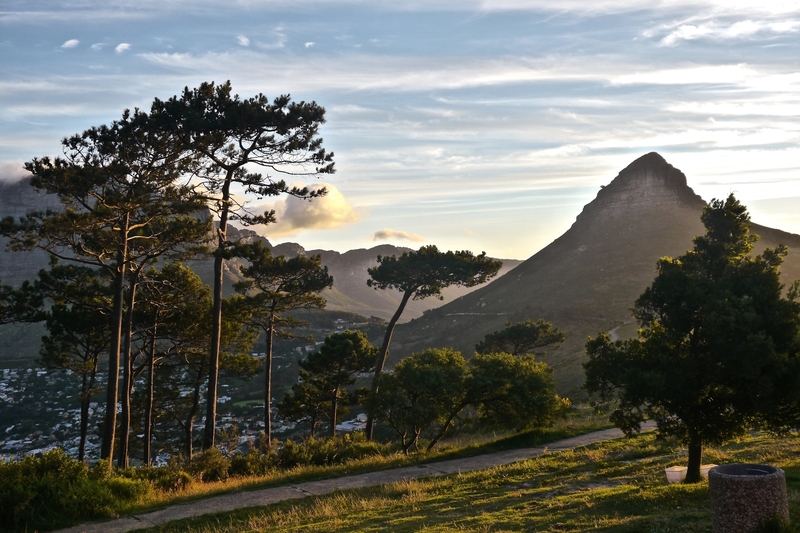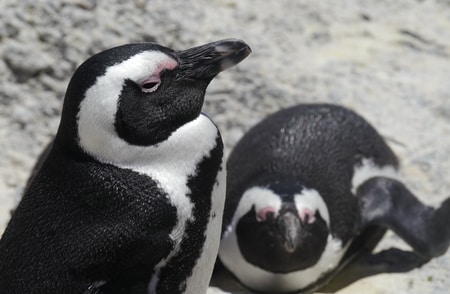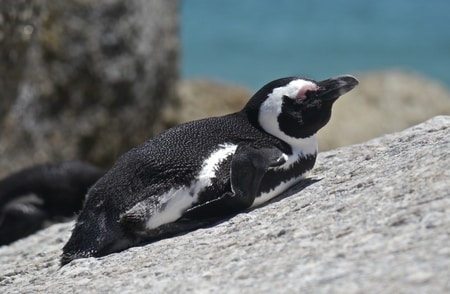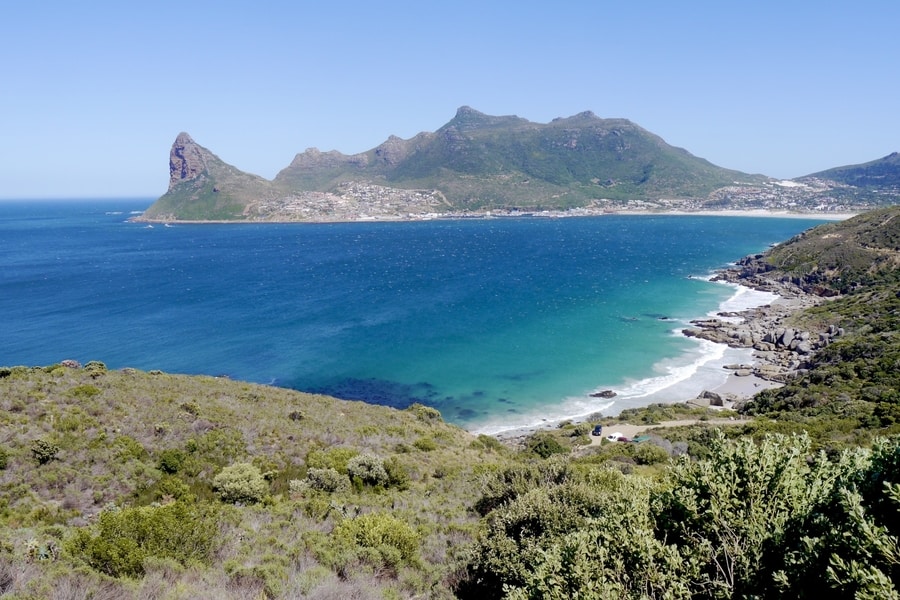
Exploring South Africa’s Cape of Good Hope
The Cape of Good Hope is a rocky headland on the southern end of South Africa’s Cape Peninsula.The spectacular cape has long been associated with the southernmost tip of Africa, where the Atlantic and Indian Oceans collide.
A common misconception is that the Cape of Good Hope lies at the southernmost tip of the African continent. The misbelief has led the area to become one of South Africa’s most popular tourist attractions.
In reality, however, the southern terminus of Africa lies 150km East, at Cape Aghulas.
But I don’t think the technicality matters much, because the area is special, no matter its latitude.
CAPE PENINSULA ROAD TRIP
Dan and I explored the Cape Peninsula on a road trip from Cape Town, following three memorable days in the Mother City. Our road trip brought us to many of the most popular attractions along South Africa’s Western Cape and allowed us to make the most of the area’s pristine beaches, abundant wildlife, and jaw-dropping coastal views.
The first stop on our journey, was the wild and scenic landscape around South Africa’s Cape of Good Hope.
The Cape of Good Hope lies at the tip of the Cape Peninsula, along South Africa’s Western Cape. It boasts a dramatic wildlife-rich coastline and is a highlight of traveling to South Africa.
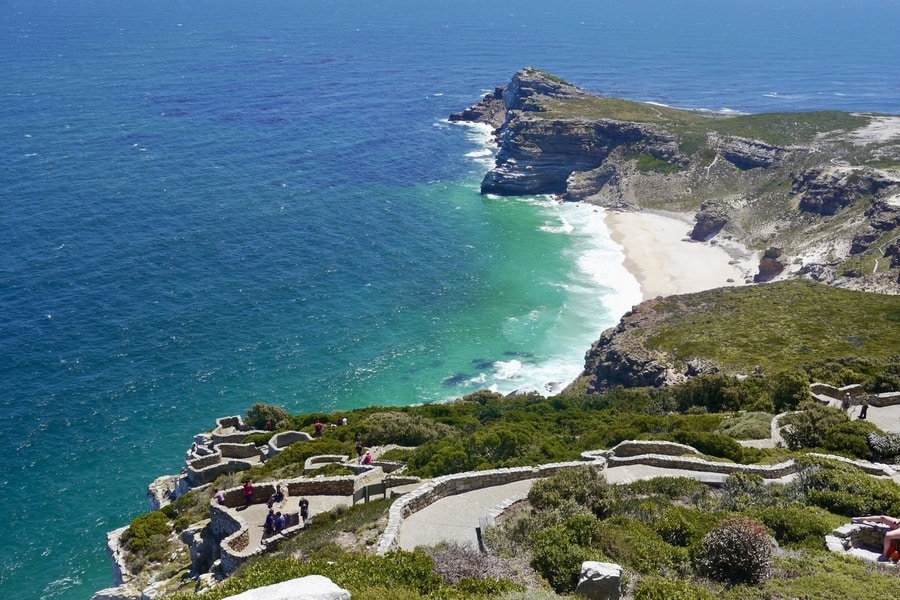
Taking a road trip around the Cape Peninsula is the best way of exploring South Africa’s wild and scenic Cape of Good Hope. From Cape Town, Dan and I rented a car and followed the road southward—past beautiful Camps Bay and Hout Bay—along the scenic Chapman’s Peak Drive.
From there, we admired the sun-basking penguins at Boulder’s Beach and soaked in views of the infamous Cape of Good Hope.
THE TWELVE APOSTLES IN CAPE TOWN
When we left Cape Town in the early morning, the sun was shining and the clouds lifted from the mountaintops in time for us to see a spectacular view of Cape Town’s Twelve Apostles.
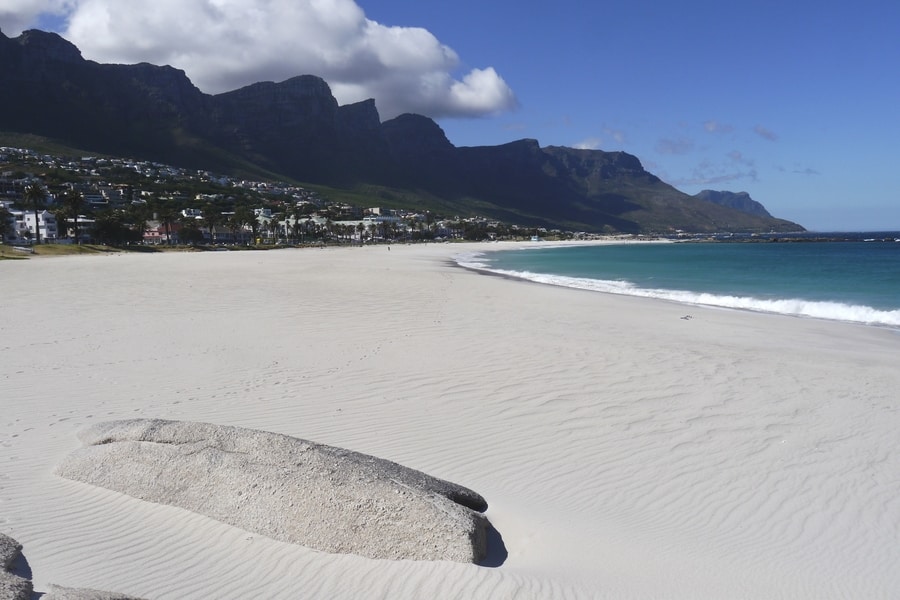
The soaring mountains form a breathtaking backdrop to the city’s lavish oceanfront property and white sand beaches and, had it not been for the fierce wind and flying sand, I’d have probably plopped down on the beach and convinced myself that I needed another day in the Mother City.
CHAPMAN’S PEAK DRIVE
The road encircling the Cape of Good Hope brought us through stunning coastal scenery.
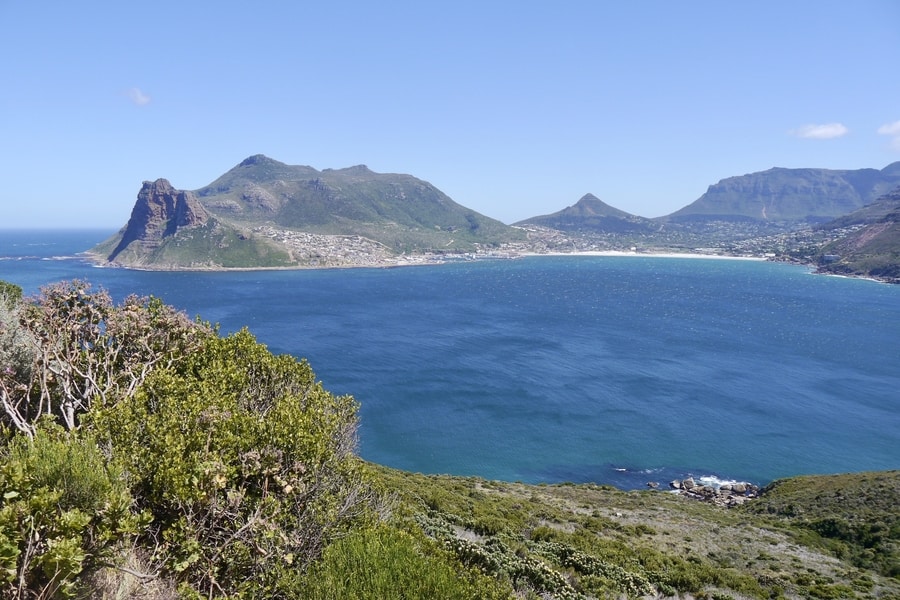
Much like Oregon’s beautiful highway 101, South Africa’s Chapman’s Peak Drive cuts through sheer cliffs and twists around emerald-green mountains. Each bend of the road affords abundant views of rocky outcrops, sapphire waters and soft, white sand.
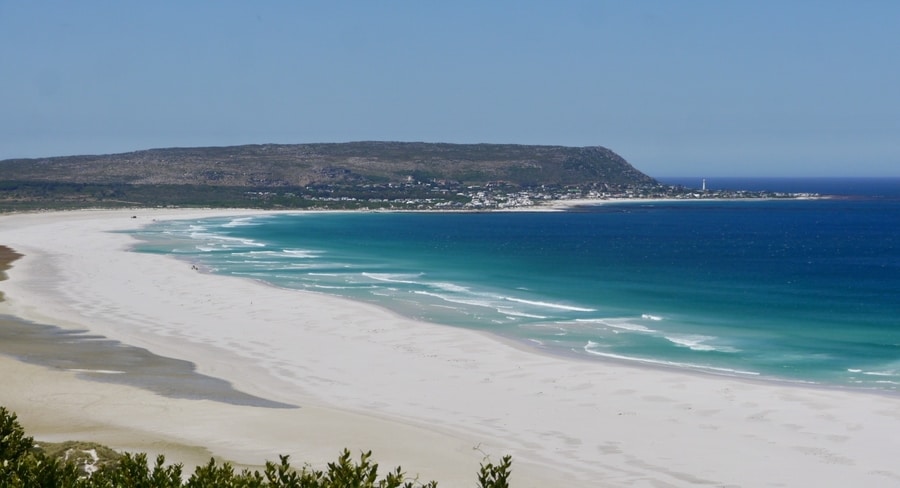
But the unrelenting winds pummeled sand into my eyes, nose and mouth, embedded in my hair and virtually swept me right back into our little car and down the road to the Cape of Good Hope.
BOULDER’S BEACH PENGUINS
Our first planned stop along the Cape Peninsula route was Boulder’s Beach in Simon’s Town–a beach aptly named for the large boulders strewn about its milky sands. The beach is well-known as a breeding ground for the small and charming African penguins, so we spent time scrambling over boulders and wading through the shallow ocean waters in order to get a closer look at these charismatic, flightless birds.
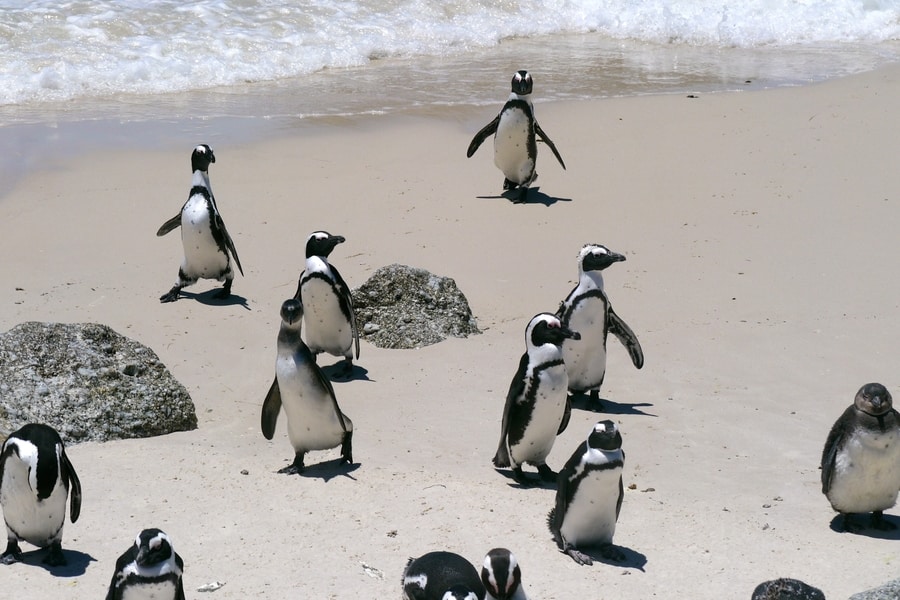
The penguins at Boulder’s Beach were everywhere–playing in the waves, tanning on the open rock faces and crouching under boulders to stay cool.
After a bit of time photographing the penguins and observing their unique personalities, we hopped back into the car and continued along the coastal roads toward the Cape Of Good Hope National Park.
THE CAPE OF GOOD HOPE
Even as it is becoming common knowledge that the the meeting point of the Atlantic and Indian Oceans lies elsewhere, tourists flock to the Cape of Good Hope in order to soak in the scenery at the bottom of Africa.
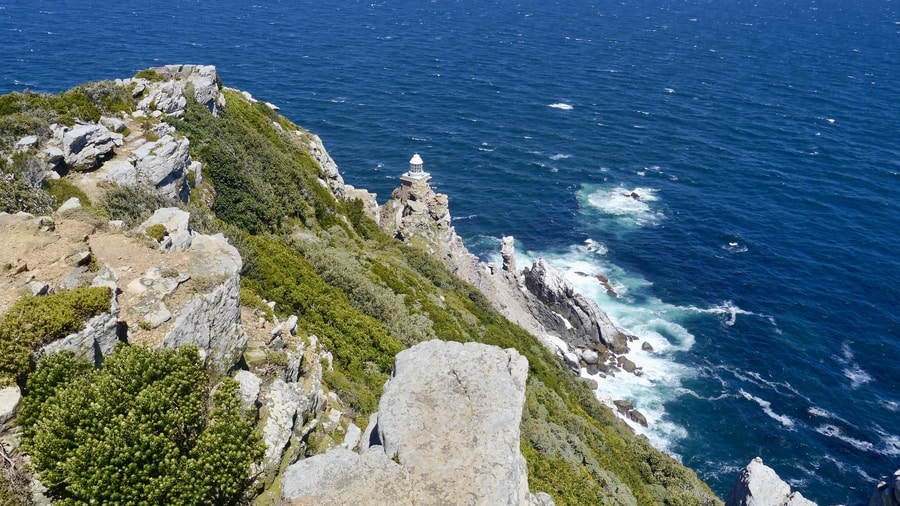
Throughout history, the Cape of Good Hope has been historically significant to sailors and explorers. Bartolomeu Dias, the 15th century Portuguese explorer, was the first officially recorded person to have successfully navigated these turbulent waters and was instrumental in setting up trade routes between Europe and the Far East.
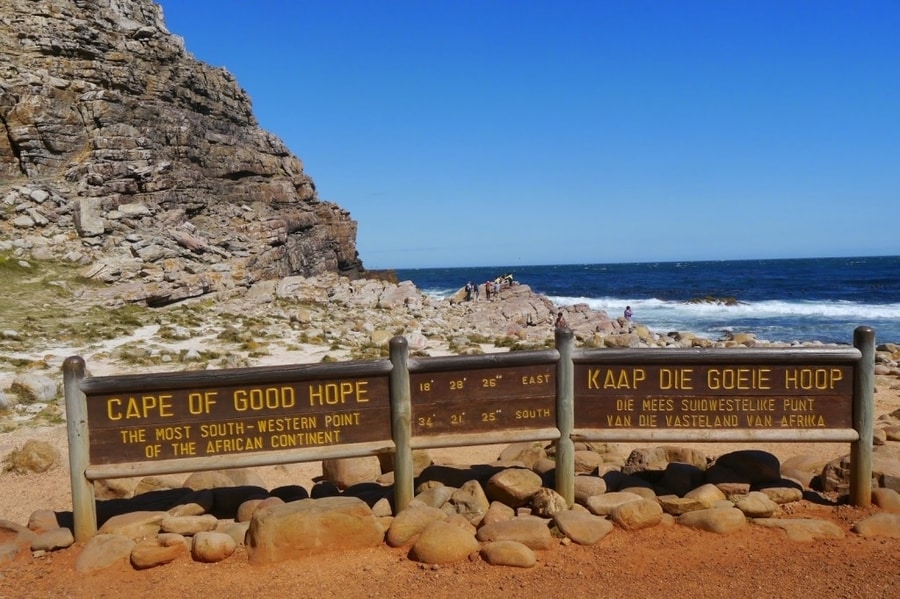
The Cape of Good Hope and Cape Point lie less than two miles apart. When we arrived, we elected to first climb up the stairs to the beautiful lighthouse at Cape Point in order to view the Cape of Good Hope from above. The area around the lighthouse was fun to explore. We walked out to various lookouts where we could see sweeping views of the lighthouses, coastlines and pristine scenery. Looking North, we were able to see the mountainous Cape Peninsula stretching toward Cape Town.
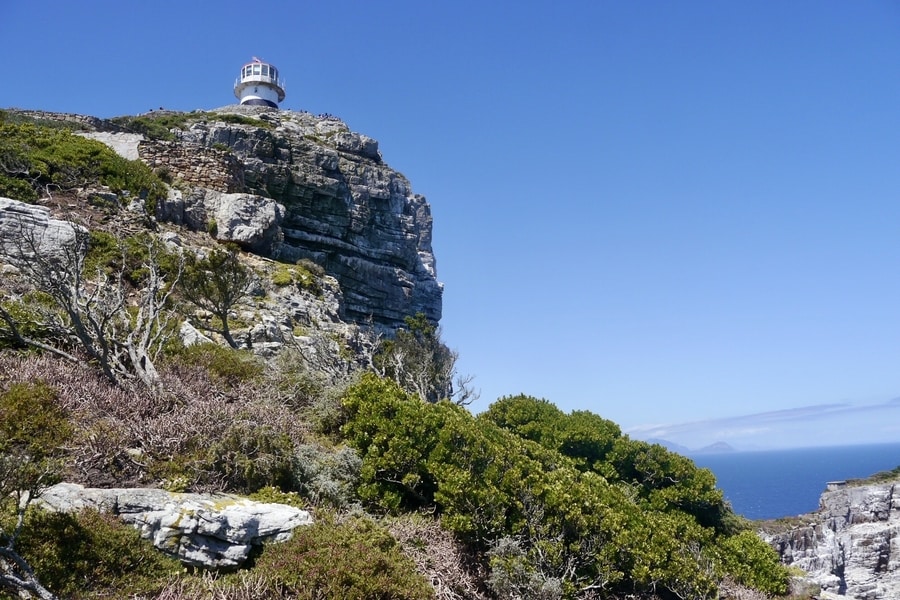
In all other directions, the blue waters spanned as far as the eye could see.
****
After a few hours exploring the various points of interest in the Cape of Good Hope National Park, we continued along the coastal roads toward the small town of Gansbaai, where we planned on discovering the unique marine ecosystem the following day.
When we finally arrived late that evening, we checked into our hostel, gathered our courage and prepared ourselves mentally for an intimate encounter with one of the most dangerous and feared animals of the deep.
_________________________________
Did You Enjoy this Cape of Good Hope Road Trip Guide? Pin It!
